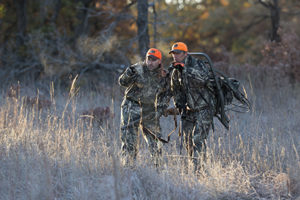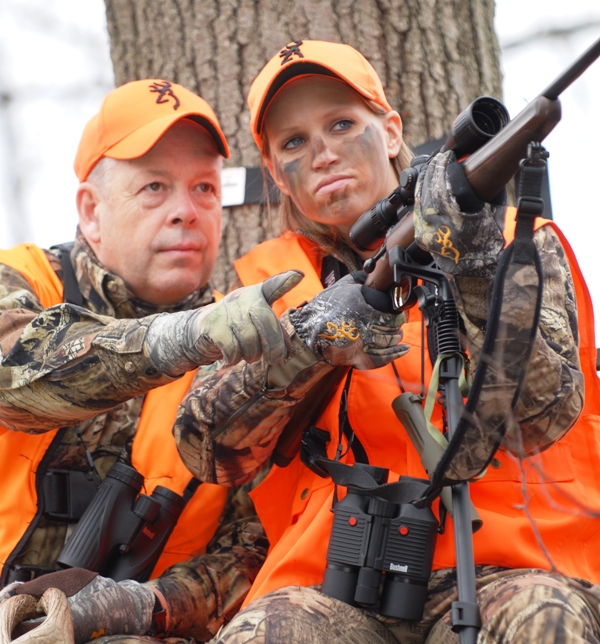In crowded Eastern forests, where visibility is limited, a deer may cross the path of several hunters during a day. If the first hunter draws blood with a bullet or arrow, is the deer “his” regardless of shot placement? Although not a prevalent as in the past when whitetail deer were concentrated in mountain terrain, disputes over deer occur and may end up in the courts. This may sound like a case for “Judge Judy,” yet hunters take their craft very seriously and if the antlers are large, the judge’s decision may award value.
Crazy Things Happen
 As a teenager, I had a very unusual situation occur that could have caused a dispute. I was hunting in falling snow from a tree stand and saw a buck moving behind me. Turning in the stand, I saw the buck stop and squeezed off a shot. I climbed down and approached the location of the deer only to see my barber walking toward the small buck from the opposite side. “Did you shoot?” he asked casually. “Yes, did you?
As a teenager, I had a very unusual situation occur that could have caused a dispute. I was hunting in falling snow from a tree stand and saw a buck moving behind me. Turning in the stand, I saw the buck stop and squeezed off a shot. I climbed down and approached the location of the deer only to see my barber walking toward the small buck from the opposite side. “Did you shoot?” he asked casually. “Yes, did you?
Ironically, we each took one shot at the buck at the same instant. Neither of us heard the other shoot just 100 yards apart. Adding to the mystery was shot placement. The animal had been spined and a bullet passed cleanly through its back so that there was no evidence of entry and exit wound. As a youngster, I surrendered my claim and the man is still a cherished friend.
A Shot to Stop
If you rifle hunt on public land with ample hunting pressure, near private land boundaries that you cannot cross, or special permit areas with high hunting pressure, you may want to aim differently than normal. Instead of shooting for the lungs or heart after which the deer will probably run 100 yards, take a careful rested shot at the base of the neck where the spine and shoulder blades converge. A bullet to this area usually drops the animal instantly and eliminates it traveling in front of other hunters.
This post from Grandview Outdoors looks at elements of deer “ownership” as viewed by the courts and is a most interesting read.









![The Best Deer Camp Chili [VIDEO] Deer Chili Ingredients, Tomatoes, Chili Spices](/wp-content/uploads/2015/10/Deer-Chili-Deer-Camp-Recipe-218x150.jpg)








![How to Call Elk Early in the Season [VIDEO]](/wp-content/uploads/2016/08/byers003-218x150.jpg)




![Idiots Disturb Hunter: How Would You Have Handled It? [VIDEO]](/wp-content/uploads/2015/10/DSC00110-e1474487693878-100x70.jpg)
![Albino Buck Shocked to Shed His Antlers [VIDEO]](/wp-content/uploads/2015/10/AlbinoDeer-100x70.jpg)